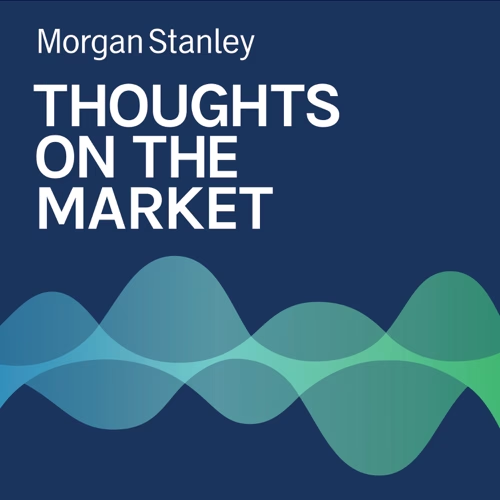
The market thinks the Fed is likely to cut rates come September. Morgan Stanley economists disagree. Our Head of Corporate Credit Research Andrew Sheets explains our viewpoint and presents three scenarios for corporate credit.
Read more insights from Morgan Stanley.
----- Transcript -----
Andrew Sheets: Welcome to Thoughts on the Market. I'm Andrew Sheets, Head of Corporate Credit Research at Morgan Stanley.
Today – the big difference between our view and the market on what the Fed will do next month; and how that impacts our credit view.
It's Thursday, August 14th at 2pm in London.
As of this recording, the market is pricing in a roughly 97 percent chance that the Federal Reserve lowers interest rates at its meeting next month. But our economists think it remains more likely that they will leave this rate unchanged. It's a big divergence on a very important market debate.
But what may seem like a radical difference in view is actually, in my opinion, a pretty straightforward premise. The Federal Reserve has a so-called dual mandate tasked with keeping both inflation and unemployment low.
The unemployment rate is low, but the inflation rate – importantly – is not. In order to ensure that that inflation rate goes lower, absent a major weakening of the economy, we think it would be reasonable for the Fed to keep interest rates somewhat higher for somewhat longer. Hence, we forecast that the Fed will end up staying put at its September meeting.
Indeed, while the market rallied on this week's latest inflation numbers, they still leave the Fed with some pretty big questions. Core inflation in the US is above the Fed's target. It's been stuck near these levels now for more than a year. And based on this week's latest data, it started to actually tick up again, a trend that we think could continue over the next several readings as tariff impacts gradually come through.
And so, for credit, this presents three scenarios. One good, and two that are more troubling.
The good scenario is that our forecasts for inflation are simply too high. Inflation ends up falling faster than we expect even as the economy holds up. That would allow the Fed to lower interest rates sooner and faster than we're forecasting. And this would be a good scenario for credit, even at currently low rich spreads, and would likely drive good total returns.
Scenario two sees inflation elevated in line with our near-term forecast, but the Fed lowers rates anyway. But wouldn't this be good? Wouldn't the credit market like lower rates? Well, lowering rates stimulates the economy and tends to push inflation higher, all else equal. And so, with inflation still above where the Fed wants it to be, it raises the odds of a hot economy with faster growth, but higher prices.
That sort of mix might be welcomed by the equity market, which can do better in those booming times. But that same environment tends to be much tougher for credit. And if inflation doesn't end up falling as the Fed cuts rates, well, the Fed may be forced to do fewer rate cuts overall over the next one or two years. Or, even worse, may even have to reverse course and resume hikes – more volatile paths that we don't think the credit market would like.
A third scenario is that a forecast at Morgan Stanley for growth, inflation, and the Fed are all correct. The central bank doesn't lower interest rates next month despite currently widespread expectation that they do so. That scenario could still be reasonable for the credit market over the medium term, but it would represent a very big surprise – not too far away, relative to market expectations.
For now, markets may very well return to a late August slumber. But we're mindful that we're expecting something quite different than others when that summer ends.
Thank you as always, for your time. If you find Thoughts on the Market useful, let us know by leaving a review wherever you listen. And also tell a friend or colleague about us today.
Senaste avsnitt
En liten tjänst av I'm With Friends. Finns även på engelska.